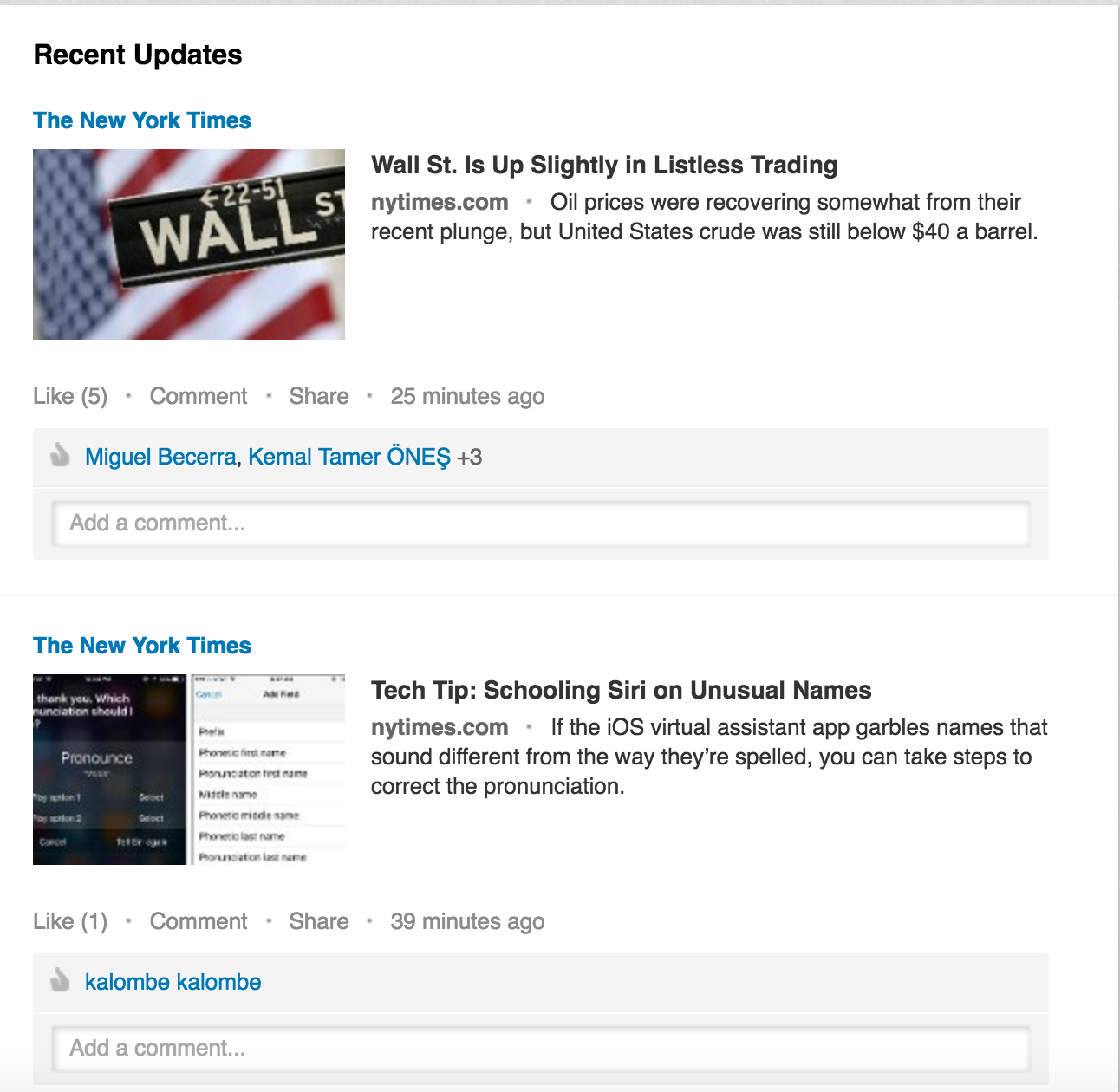B2C
How Microsoft Could Turn LinkedIn Into a Legitimate Facebook Rival
Every social network has a personality. Twitter is for the clever individual trying to turn current events into a punchline. Facebook is for the opinionated person who overshares details about private life. Instagram is for those who want to filter their lives through indulgence. But LinkedIn? That’s where users go to be boring.
As the internet’s corporate rolodex, LinkedIn gets the job done. But as a content network, it’s a missed opportunity.
Think of it this way. Getting hired is all about standing out, right? We want our résumés to resonate with employers. We write cover letters so hiring managers can get a feel for our unique voices. By extension, the posts we write and share on LinkedIn should communicate intelligence, self-awareness, skepticism, and depth. But instead we end up with a lot of fluffy “thought leadership” posts dressed in terrible stock photography. Abstract advice like “3 Steps to Finding that Work/Life Balance” or “The Truth About Authentic Leaders.”[note]What the hell is an authentic leader?[/note]
Regardless of how you feel about Facebook’s business model, you have to credit the platform for facilitating expression and creativity. It can be an echo chamber at times, but it’s also a place for entertainment and debate. Twitter even more so, where intellectual opponents (and trolls) can volley back and forth with ease. By comparison, LinkedIn is the social media equivalent of elevator music.
Perhaps that’s why, despite boasting a high-value professional audience of more than 430 million registered users, it hasn’t seriously challenged Facebook for social supremacy. According to eMarketer, LinkedIn’s ad dollars will only account for 3.4 percent of all social network revenue, while Twitter’s piece of the pie is about 10 percent. Facebook dominates, with close to 75 percent.
Further cementing that hierarchy, LinkedIn significantly trails both networks when it comes to mobile growth. In 2016, only 28 percent of LinkedIn’s digital ad revenue in the U.S. will come from mobile, compared to 90 percent for Twitter and 82 percent for Facebook.
But the wild card in the deck could be Microsoft, which bought LinkedIn for $26.2 billion last month. The move, though expensive, makes sense on the surface as a software play if Microsoft can find a way to package its Office products into LinkedIn’s services. The real value, however, could be turning LinkedIn from a giant pile of résumés into a network people actually want to be a part of.
Unlike other major social platforms, LinkedIn struggles to keep its users coming back. You create a profile, but you don’t necessarily need to check it unless you’re looking for a new job. As Christopher Mims reported in a recent Wall Street Journal article about Microsoft’s acquisition, “Only about one quarter of LinkedIn’s 400 million ‘cumulative’ users return to the site every month.”
The reductive thought leadership sets off a nasty cycle that overshadows the good work from publishers that deserves to get shared. All too often, that thoughtful journalism gets trumped by generic thought leadership. Not only are those thought leadership posts bad, but they also tend to lead to meaningless, supportive comments from people who suck up to executives and decision-makers. The suck-ups, in turn, mirror the advice content they see from established professionals with their own blandly inspirational memes and hashtags.[note]#confidence is a really bad hashtag.[/note] Some of these posts might even make Tony Robbins put up a hand up and say, “That’s enough.”
Since three-quarters of LinkedIn’s user base doesn’t check their feeds regularly, this echo chamber of empty self-help winds up suppressing the ad revenue that could come from big-name publications. Publishers don’t have an incentive to invest resources here the way they do on Facebook, be it for organic traffic or paid social.
Take The New York Times, which has 11.5 million page likes on Facebook, 29 million Twitter followers, and… 1.5 million LinkedIn followers. The Times still posts dozens of article links on LinkedIn every day, but many of them receive less than a handful of likes. There’s usually no activity in the comments section, let alone a healthy discussion. And the thumbnails are static and small. When the Times adds a financial news update, there’s no image at all, just a thumbnail of the paper’s logo. Compare that to the publication’s feeds on Facebook and Twitter, which are full of auto-play videos, high-quality visuals, and engaging summaries.


The contrast is striking.
The strange part is that LinkedIn has incredible potential. It’s probably the best place to reach professionals online. Because of its important users—and the data collected about them—LinkedIn can justify charging higher rates than other social networks for paid content distribution. Most importantly, people over 18 feel obligated to create profiles if they’re in the job market, which means the network has a consistent stream of new users every year. (According to LinkedIn, students and recent graduates are its “fastest-growing demographic.”) That inelasticity is an advantage Facebook and Twitter don’t have.
If LinkedIn is ever going to change its reputation, the Microsoft deal could serve as a perfect catalyst—new ownership flush with cash that’s hungry to compete with the biggest names in tech. There’s a definite need for a native video feature and better options for thumbnails. Tweaks to the algorithm that surface higher-quality content are also likely needed. Perhaps LinkedIn could advise (and potentially pay) publishers to create content specifically for the platform, similar to what Facebook did with its live-streaming product. At the very least, it could make high-quality posts on Pulse, the platform’s news aggregator, more visible and easier to access.
People spend so much time at work—our professional lives don’t have to be boring or sanitized. Now, we’ll just have to see if Microsoft is up to the job.
Image by Deborah PendellGet better at your job right now.
Read our monthly newsletter to master content marketing. It’s made for marketers, creators, and everyone in between.




